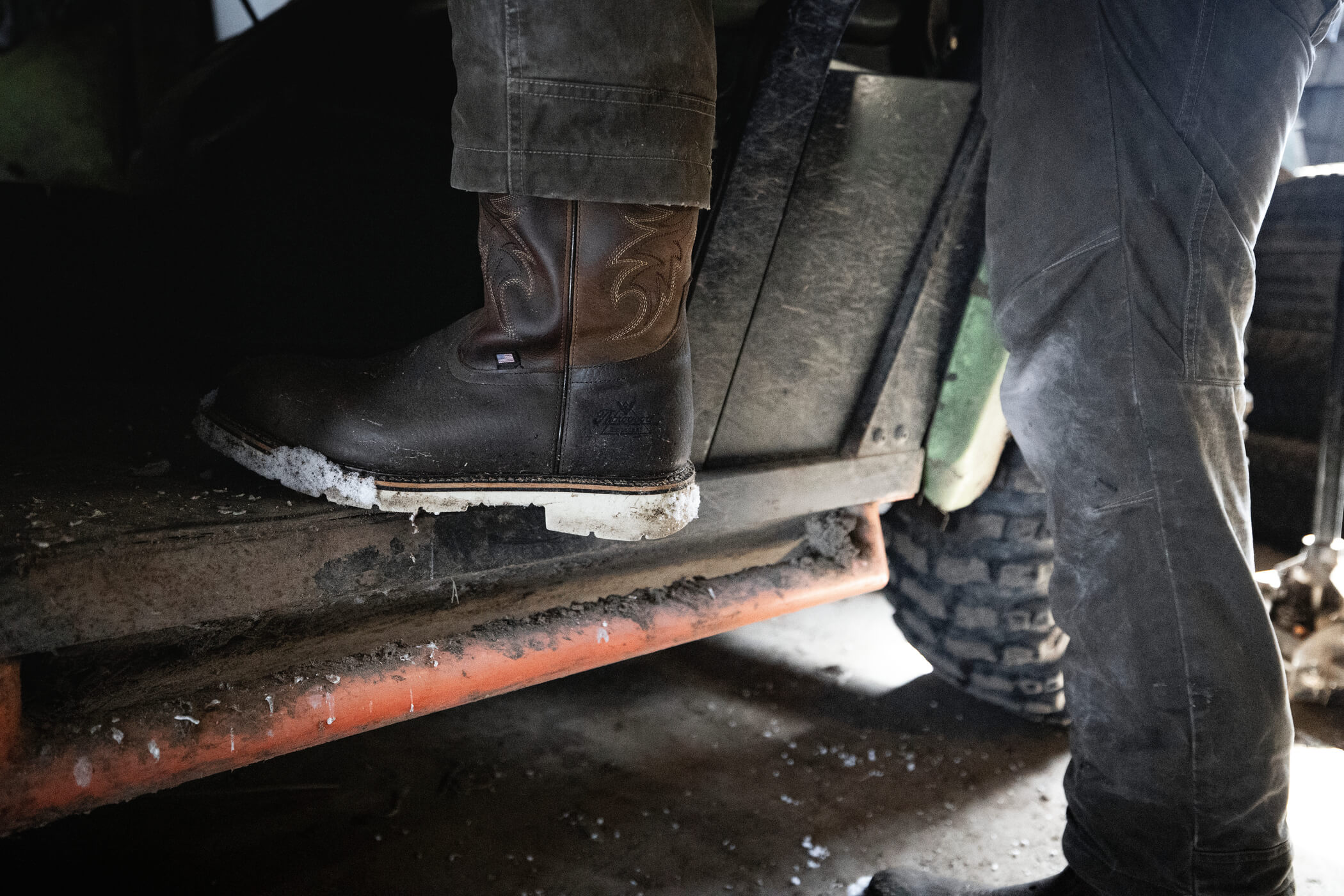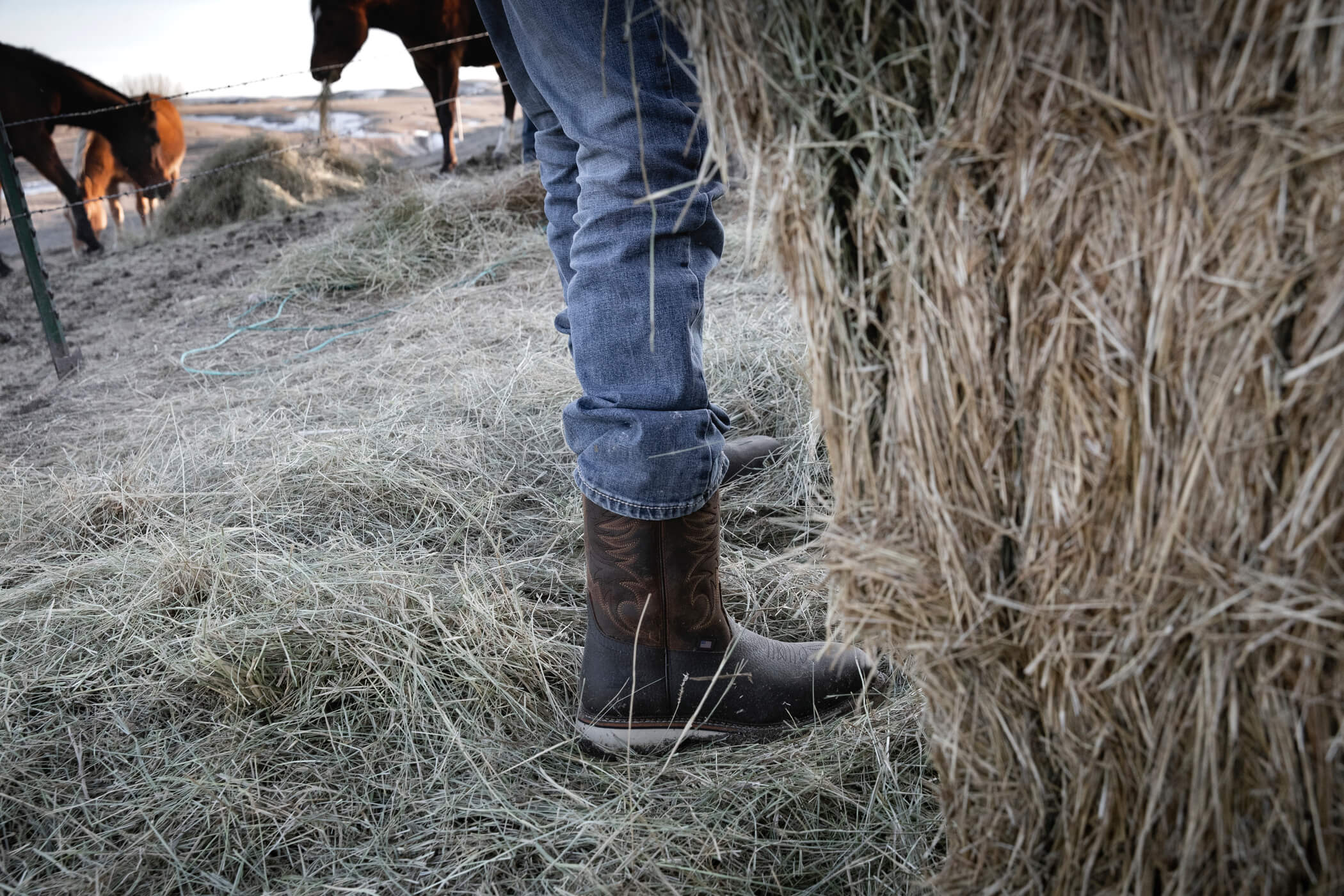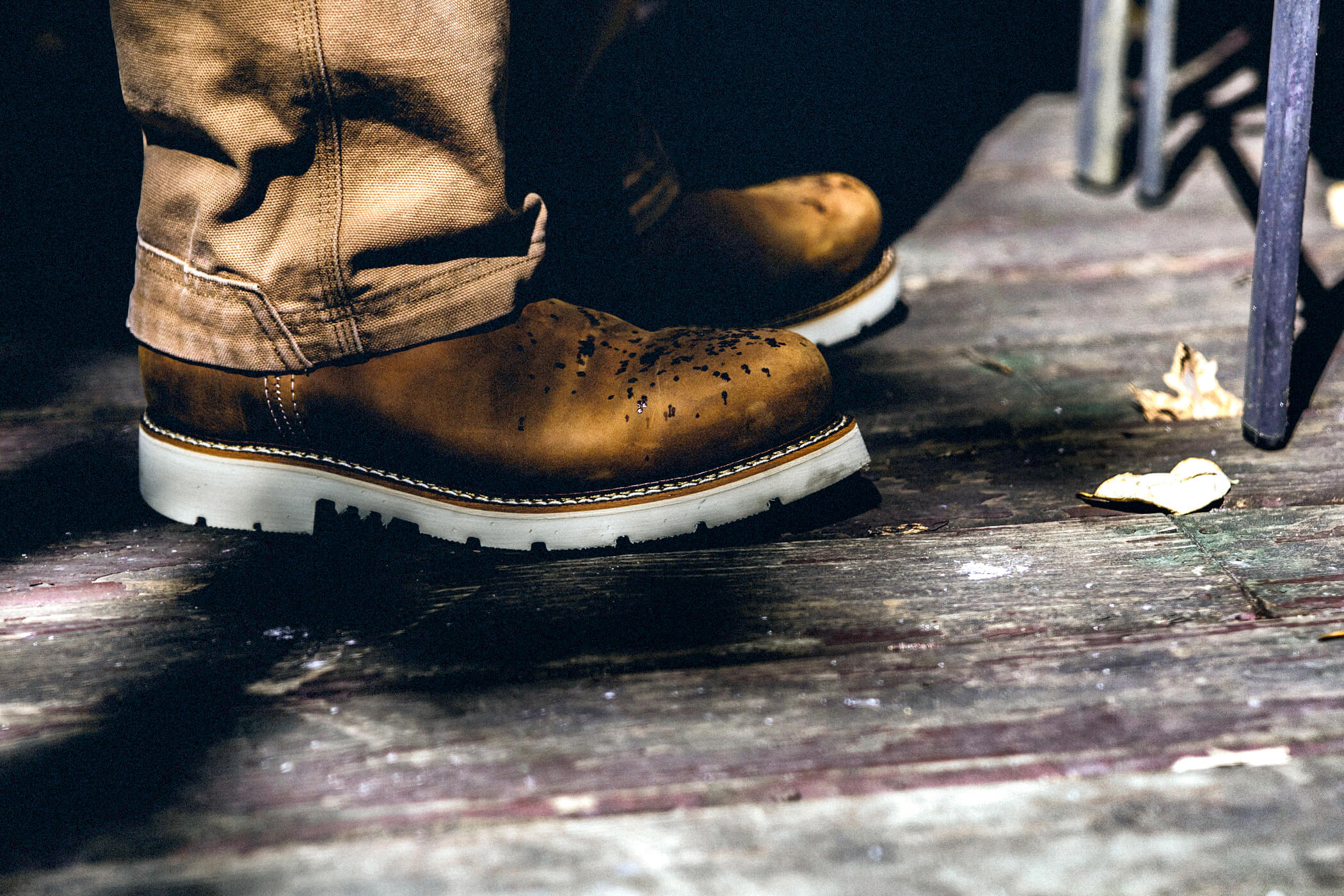Wellington boots are fairly simple but extremely useful outdoor boots that are identifiable by their lack of laces, slip-on / slip-off style, and height. They’re usually taller than traditional work boots, making them ideal at keeping your feet clean and dry while working in wet or muddy conditions. For this reason, they’ve become extremely popular in certain sectors of outdoor labor.
ORIGINS
Wellingtons, or “Wellies,” were developed in the 1800s by the British military leader Arthur Wellesley, the Duke of Wellington, as a more practical and utilitarian version of the military’s standard Hessian boots, which were taller and more decorative, like riding boots. The low heel, medium cut, durable leather uppers, and how easy the new boots were to wear quickly gained them a following in British military circles, where different versions were introduced–some shorter, some taller, some rubber instead of leather. By World War I, the boots had become standard issue military footwear in the trenches. The sealed, tall uppers that left room to breathe proved perfect for the mud and muck of trench warfare, keeping soldiers’ feet clean and dry and helping stave off trench foot. They were more comfortable, and could handle rougher terrain, than previous military boots.
After World War I, conscripted soldiers whose civilian jobs had them working outdoors or in messy conditions–farmers, ranchers, meat packers, and workers in the mining and extraction industries–began using their Wellingtons on the job back home. Throughout the 20th century, manufacturers began to tailor Wellingtons to the work boot market to meet increasing demand for the versatile boots.

By testing all kinds of footwear under the same lab conditions, ASTM can ensure that all certified footwear hits those same specifications. And as has been pointed out before, composite toe boots are every bit as protective as steel toe boots, meeting the same rigorous standards for certification.
WELLINGTON WORK BOOTS
The late 20th century is where Wellington designs split. Using vulcanized rubber, some Wellingtons specialized as rain boots. More versatile Wellington models started incorporating more and more features associated with work boots. Many continued using leather in their uppers, maintaining the versatility of the material. Insoles and lining were improved to handle the rigors of long hours of outdoor work, and stiff shanks were built into the boots to help them maintain their form under duress.
BENEFITS OF WELLINGTONS
For certain types of work, Wellington slip on work boots provide some important benefits over traditional lace-up work boots. The work boots are enclosed from the sole of the foot all the way up to the collar of the boot–generally about 10-12 inches. The benefits of keeping water and muck entirely out of your boots is obvious to those with dirty jobs or who do a lot of outdoor work in the rain. It is no surprise, then, that Wellingtons are often considered the best work boots for landscapers, farm workers, ranchers, and stable hands who have to contend with mud and animal manure. The style also proves useful to fishermen and aquaculture workers, where spray and splashes are part of the job, as well as animal processing. And when a job calls for working with chemicals and other contaminants, the benefits of complete sole-to-collar waterproofing takes on added importance.
Many workers also appreciate the ease with which Wellingtons can be put on and taken off. A good pair of Wellingtons are easy to kick off, while still built to hold your foot firmly to the footbed while you are moving about in them. The style allows excellent freedom of movement while you work. But since they do not lace up, they do not provide the same tight ankle support of more traditional work boots styles.

WHAT MAKES A GOOD PAIR OF WELLINGTONS?
Whether looking for rubber or leather Wellington boots, it is important that the material be high quality. For leather boots, make sure the upper is made from full-grain leather. Full-grain leather is made from the outermost layer of an animal’s hide, the strongest and most durable part of the hide, so it is highly resistant to wear and tear. The natural grain structure of full-grain leather also allows it to breathe, aiding temperature regulation and moisture control, and making boots crafted from full-grain leather much more comfortable work boots to wear and more resistant to becoming stiff. Look for pull loops on both sides of the collar to make pulling them on easier.
As with any work boot, a good work Wellington will feature a stiff shank between the insole and the outsole, helping the boot retain its shape under duress. In the case of Wellingtons, the shank will also play a part in keeping the boots firm around your feet. But the boot should be constructed with a good heel cup and footbed that hold your feet in place, since the lack of laces means the rest of the upper is not holding your ankle as tightly. Thorogood Wellingtons come with our trademark Ultimate Shock Absorption™ footbed, among the best insoles for work boots available. In addition to a contoured heel cup that helps hold your foot firmly in place and a built-up arch that molds to your foot, the Ultimate Shock Absorption footbed is dual-density, providing shock-absorption at the heel and ball of the foot and softer cushioning around the balance of the foot.
Depending on the work you do, and the OSHA requirements of your jobsite, you may need composite or steel toe work boots to protect from impact and compression hazards on the job. If you are doing work outdoors in muddy conditions, you will likely need a heel outsole for added traction on uneven surfaces. But for more urban work on wet pavement or concrete, it may be better to opt for a wedge outsole to maximize the surface area and friction between your feet and the ground. Either way, slip-resistance and durability should be high priority in any work boot, whether Wellington or not. Look for outsoles constructed from sturdy polyurethane or rubber, with low lugs for channeling water and maintaining friction with the ground.

MODERN WELLINGTON WORK BOOTS
Thorogood offers a range of Wellington work boot styles, job-fitted for all kinds of work. These boots incorporate advanced materials and features that were unheard-of when the Wellington was first developed, making for tougher, safer, and more comfortable boots for work. Whether you’re in the market for work boots with steel safety toe protection or more lightweight work boots with non-safety toes, Thorogood Wellington work boots for men are always built for safety and comfort, constructed from full-grain leather with durable oil- and slip-resistant outsoles to keep you steady on your feet in the wet and muck.
